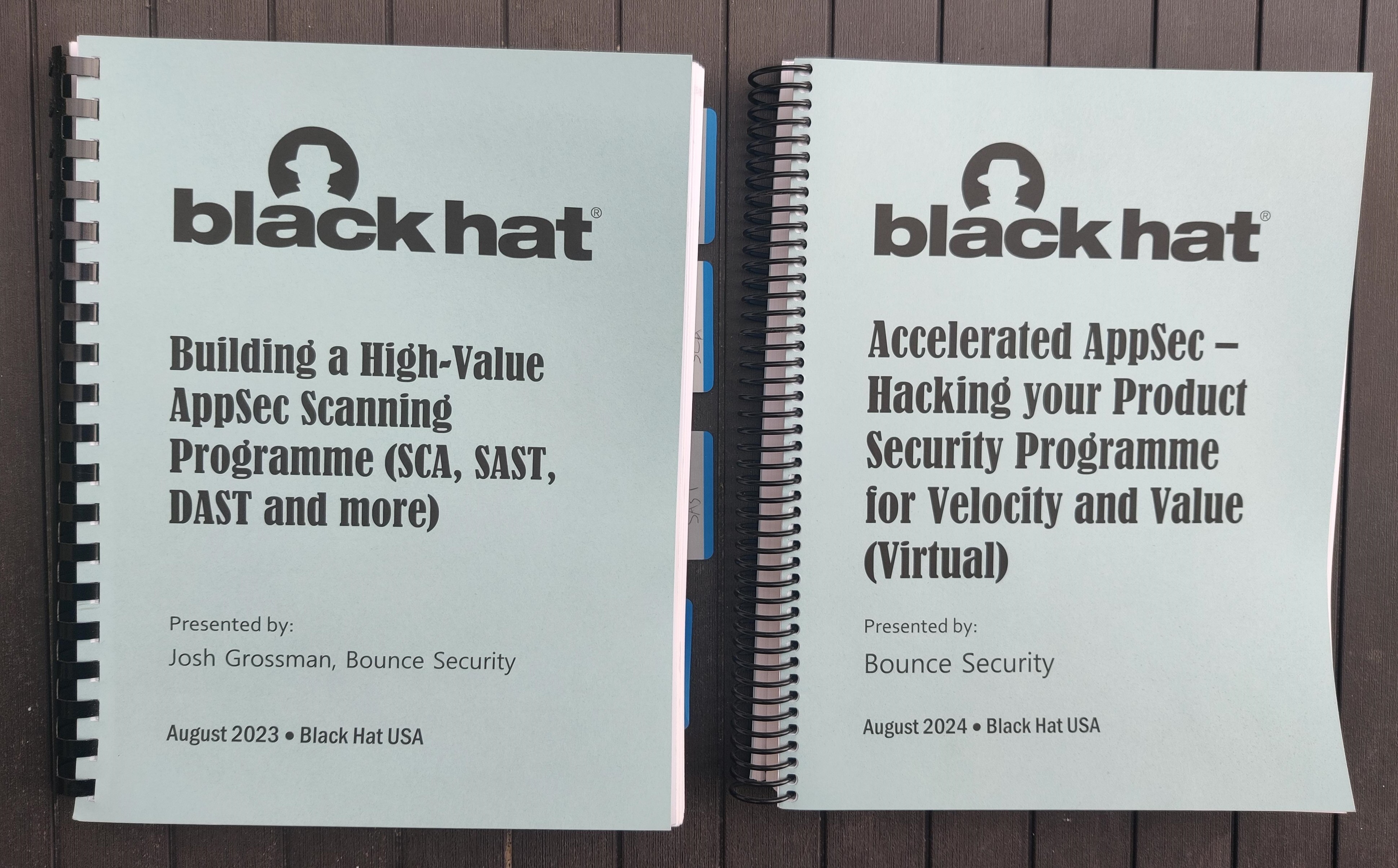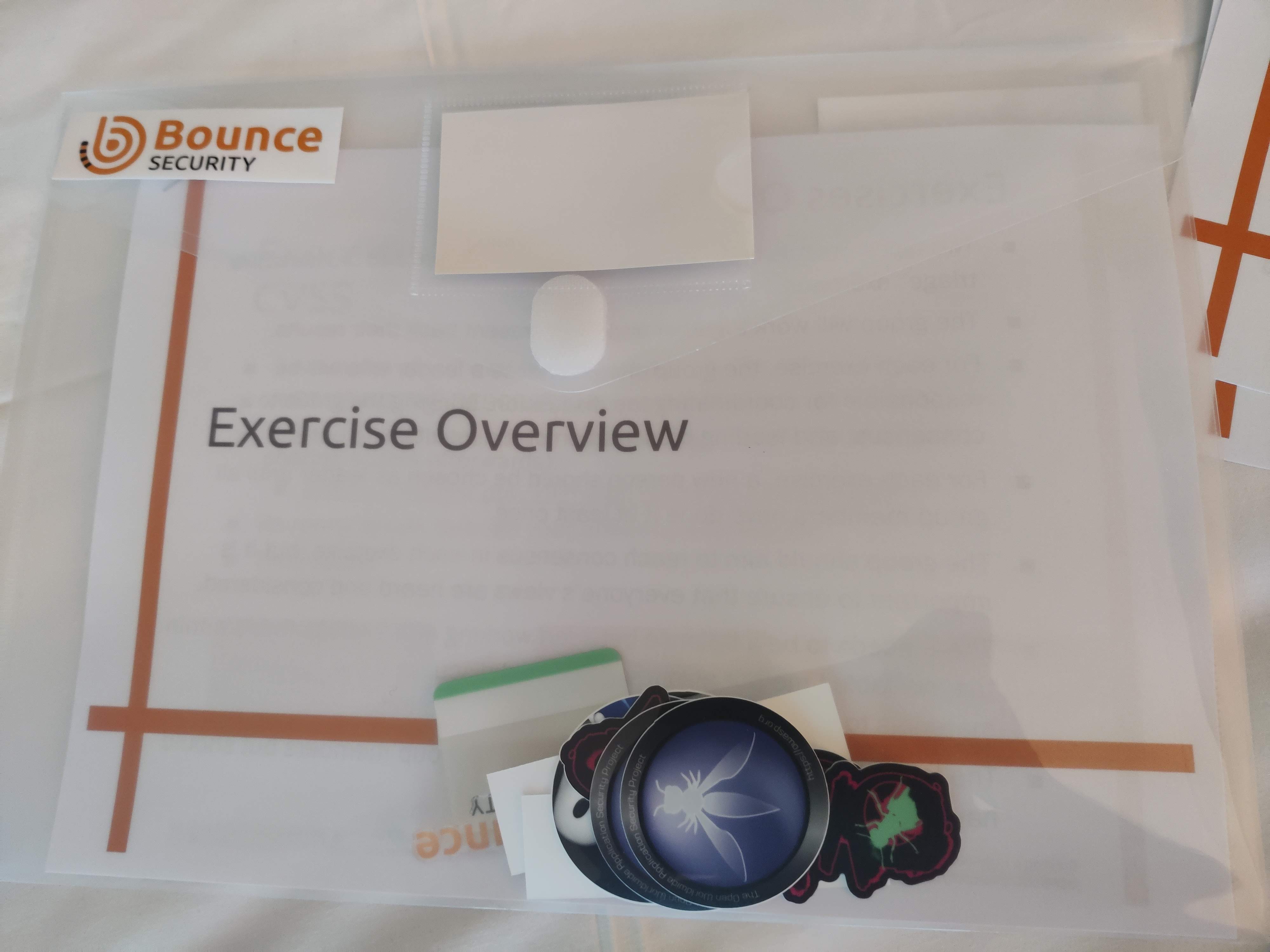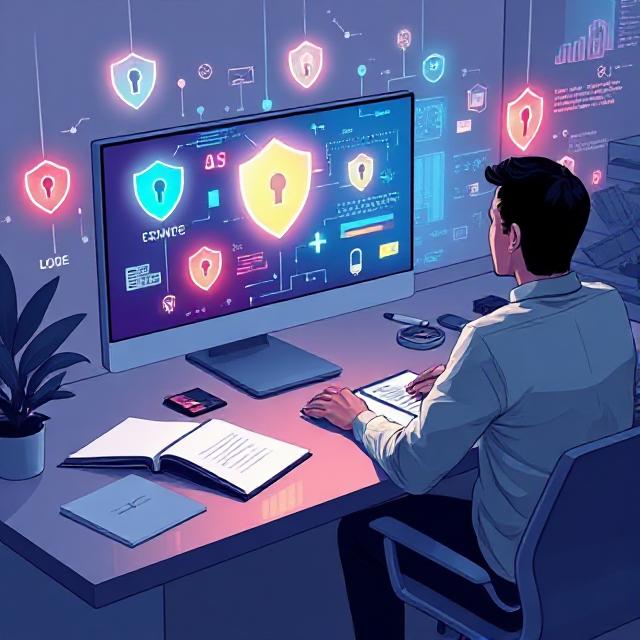Article Series: So you want to train at Black Hat (or other conferences)?
This is a series of articles about our experiences submitting, preparing and delivering training at Black Hat (and other conferences as well).
It has been quite the journey and it feels like we learnt a lot of things which were not obvious to us at the beginning or were just not documented.
In this series, we will try to set this information out in an organized way to hopefully help people in the future who are interested in going through a similar journey.
This series is complete for now but if you have questions or requests for further posts, you can contact Josh via his team page.
Posts in this series:
- So, you want to train at Black Hat (or other conferences)? An Introduction
- What is my motivation? What should your motivation be?
- Working out your financials
- Finding your niche/selling point
- Planning the Practical
- Writing your Submission
- Selling and Marketing your course
-
Making your preparations
Making your preparations
Published on 9 July 2025 by Josh Grossman
Introduction
Your course is confirmed and you’re ready to go? Fantastic! That’s a major milestone worth celebrating. 🎉 Now that you’re past the proposal phase, it’s time to think about the practical preparations that will ensure your course is not just delivered, but delivered smoothly and memorably.
In this post, I’ll walk you through essential pre-course considerations, from visa planning to organizing handouts, so that nothing catches you off guard when it’s go time.
Visa Considerations: More Than Just a Stamp
While not strictly a financial issue, visa planning is a must-do if you’re delivering a course abroad. Skipping this step could derail your training before it begins.
Getting a Visa to Enter the Country
Ask yourself: How easy is it for me to enter the country where I’ll be training?
If you don’t have the privilege of a streamlined entry process (like the US ESTA or the upcoming EU ETIAS), start early. Some visa applications take weeks or even months. Even the time between your course being accepted and the conference date might not be enough, especially if there is a backlog.

Getting a Visa That Lets You Get Paid
Here’s where things get tricky. I’m not a lawyer (technically, I’m an accountant but I’ve never practiced), so this isn’t legal advice. However, be aware: Getting paid to train abroad might require a different visa than just attending a conference.
Check whether you’ll legally be allowed to work (i.e. deliver training) and get paid while in that country. Conferences often won’t have definitive guidance on this either so it’s your responsibility to do the homework.
Note that the US in particular has gotten stricter about this and in some cases people were detained at immigration for attempting to come in to work on the wrong visa.
Supplementary Materials: Going the Extra Mile
Beyond your core curriculum, it’s a great idea to prepare supplementary materials that enhance the learning experience. These can include physical goodies, printed handouts, or digital resources. Let’s break them down.
Goodies and Extras
If you’ve promised participants anything extra (such as stickers, USB drives, branded gear) now’s the time to deliver. But beware: You might not know your final headcount until right before the event.
At Black Hat 2023, my attendee numbers jumped by 50% in just two weeks.
So, plan generously. It’s better to have a few extras than run out and disappoint attendees. For expensive items, consider a cutoff: for example, “Free hardware kit for sign-ups received 3+ weeks in advance.”

Course Materials
For in-person training, I’m a big fan of printed materials. When exercises require referring to multiple documents, printed copies save participants from constantly alt-tabbing between different screens.
I always print and bring these materials myself to ensure quality and timing. The exception? At Black Hat, they print a course workbook for you which is a nice touch!
Pro Tip: Never pack your printed materials in checked luggage. Ask me why one day :)

On one occasion where I wanted to go a little above and beyond, I ordered plastic document folders via Amazon to the venue. Each participant got one to organize their handouts, plus some extras like sticky dividers and branded stickers.

Printed materials are great during the course, but soft copies are critical for long-term reference. I provide PDFs unless I want students to edit the files themselves.
I “drip feed” exercise materials throughout the course, which adds a bit of complexity but keeps students from jumping ahead. For slides, I always ensure the numbering on the handouts matches the numbering on screen. This keeps everyone on track.

Don’t Overthink It: Focus on Delivery
While all this prep helps, don’t lose sight of what truly matters, the content and the experience. Your delivery, your energy, and the interactions you create with participants are what make your course memorable.
Handouts and goodies? They’re just the icing on the cake.
Looking for more?
That’s a wrap for now but I have more ideas in the pipeline. Did you find this helpful? Let me know what you’d like to hear more about or which questions you want answered next.
Let’s make your next training the best one yet. 🚀
This post is part of a series: So you want to train at Black Hat (or other conferences)?
Other posts in this series: